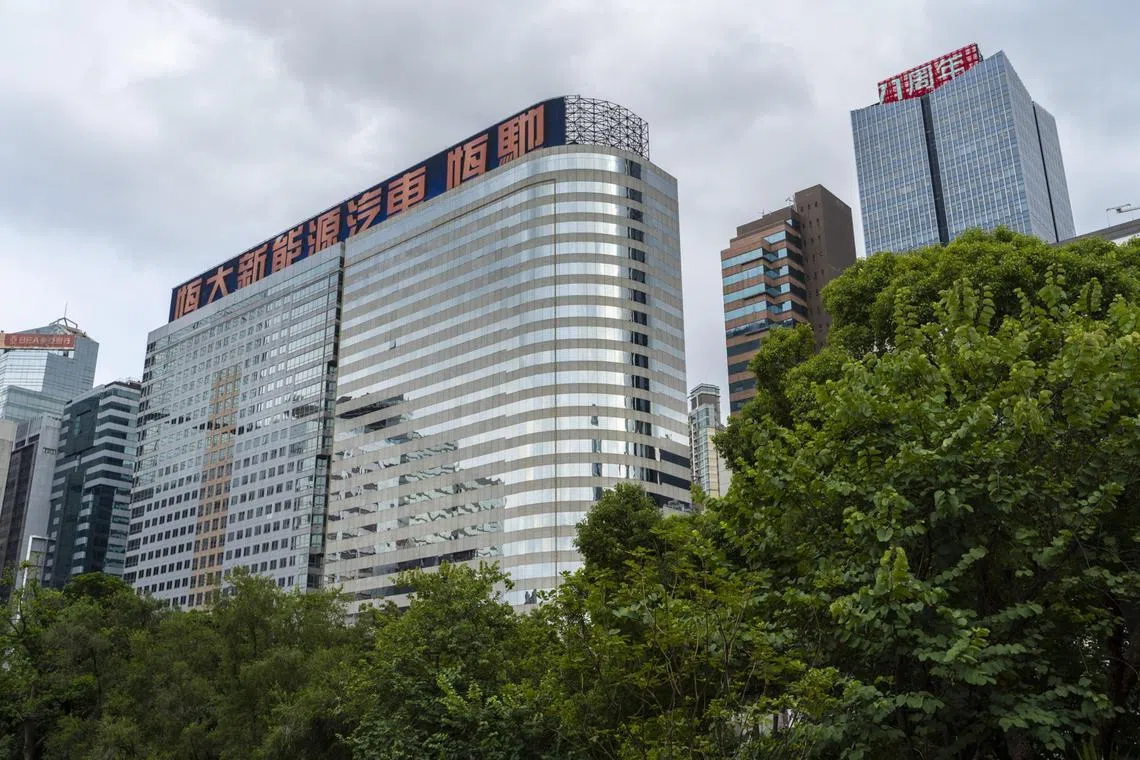Evergrande creditors seized a $2 billion Hong Kong tower they can’t sell
Sign up now: Get ST's newsletters delivered to your inbox

Refurbishments and a name change from China Evergrande Centre to YF Life Centre have failed to convince buyers.
PHOTO: BLOOMBERG
Follow topic:
HONG KONG – Nothing symbolises the demise of China Evergrande Group
Refurbishments and a name change from China Evergrande Centre to YF Life Centre to steer clear of the disgraced defaulter have failed to convince buyers at a time when Hong Kong’s office market is going through its worst downturn in years.
Evergrande’s financial woes even started to affect operations at the 26-floor building, which sits in Hong Kong’s busy Wan Chai district. Three of its 11 elevators were not running because the developer had failed to pay the contractor, said Mr Godfrey Cheng, deputy senior director at Savills (Hong Kong), an agent for the receivers. Maintenance work has since begun, Mr Cheng said.
That has not been enough to boost the value of the tower, with the low end estimated at almost US$1 billion below what Evergrande paid for it in 2015, suggesting severe losses for the company and the lenders behind the loans that it backed. It is also a blow to other creditors who are waiting for recovery from a debt restructuring plan, which the developer is now trying to expedite after this week revealing losses totalling US$81 billion in long-delayed results.
The impasse signals a harsh reality for secured lenders of China’s defaulted developers: Trophy assets in Hong Kong that were purchased at record prices may not attract acceptable bids even at a steep discount, complicating efforts to recover debts. What is standing in their way is a tug of war with bidders in a commercial real estate market that is now seeing record vacancies.
There have been “quite a few serious inquiries” for distressed assets under receivership, including the former China Evergrande Centre, said Ms Tiffany Wong, managing director with Alvarez & Marsal’s restructuring practice in Hong Kong, which acts as the receiver of the tower. But few deals were reached because of “a wide gap in expectations of the fair value of the property”, she said in an interview.
The struggle to offload assets is not just in the financial hub. Another distressed builder, Shimao Group Holdings, recently failed to find a buyer for a US$1.8 billion project in Shenzhen, despite a hefty price cut. But it is the properties in Hong Kong that may be of greater concern to creditors because they have historically been regarded as easier to sell, and at a high price.
Hong Kong’s commercial property market is at its worst
The city’s overall grade A vacancy rate was almost 15 per cent in May, more than three times higher than in 2019, Colliers data shows. With interest rates rising along with supply, investors have little incentive to bet on Hong Kong’s office blocks.
A recent deal offers a glimpse into what distressed sales can get. The Goldin Financial Global Centre sold for HK$5.6 billion (S$948 million) to investment firms after two years of trying, way shy of its estimated value of as much as HK$16.5 billion.
Debt recovery from other distressed Chinese companies also hinges on offloading the buildings they splurged on just a few years ago. Coming in August is the close of a tender offer for commercial building Cheung Kei Centre, now also in receivership. It was seized over debt owed by property tycoon Chen Hongtian. Shimao chairman Hui Wing Mau has also put up two floors of The Centre for sale. No buyer has emerged yet. BLOOMBERG

